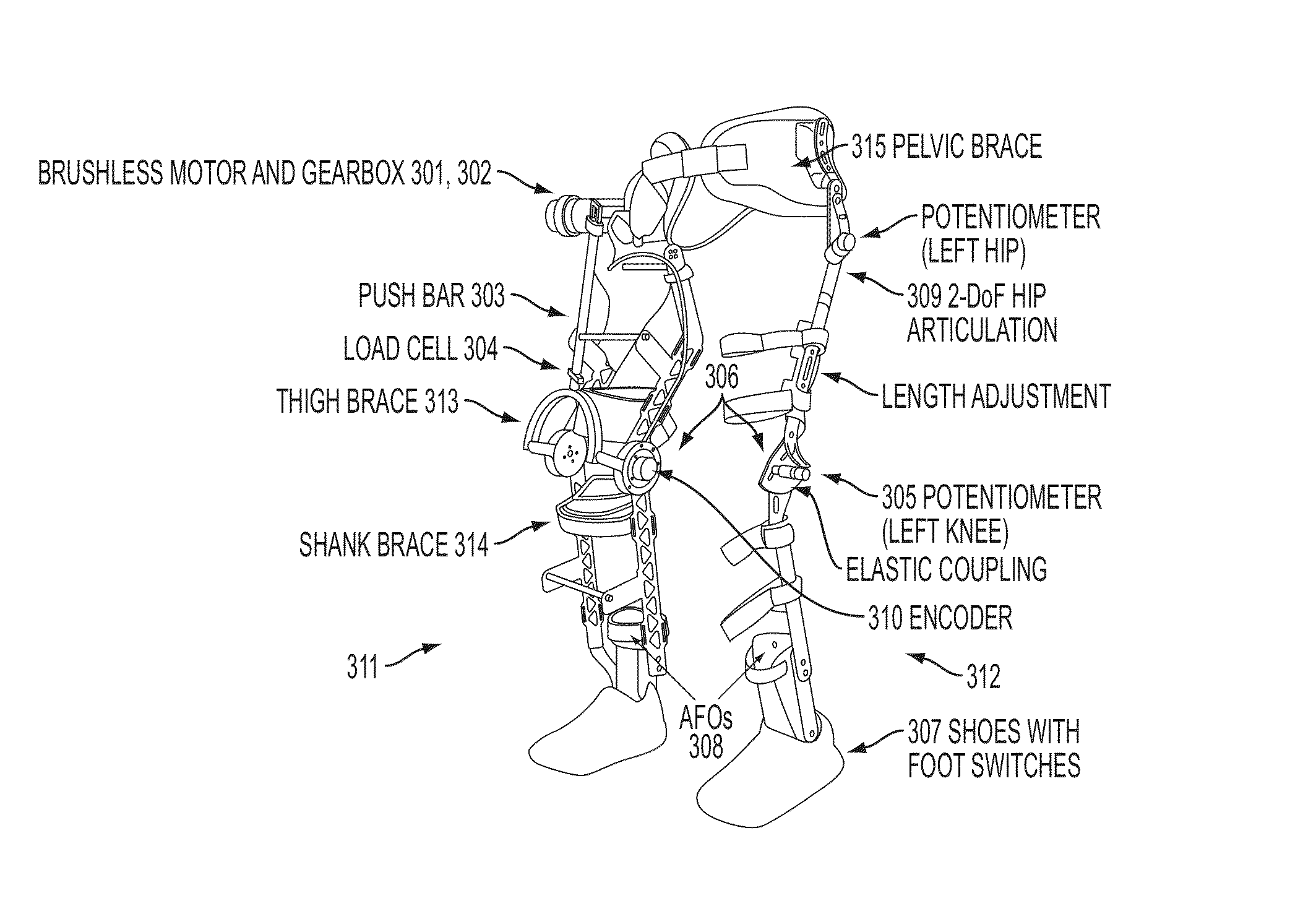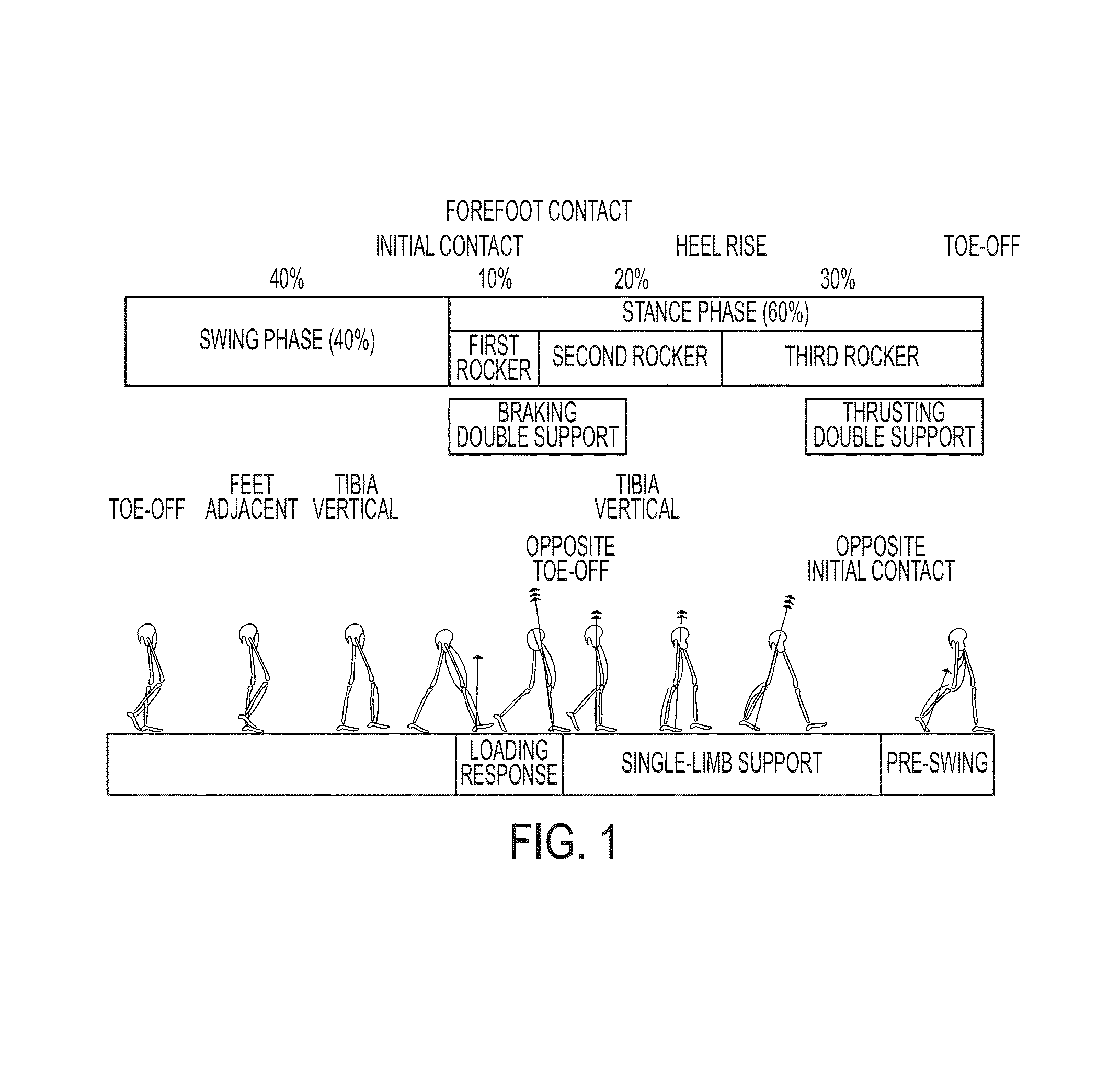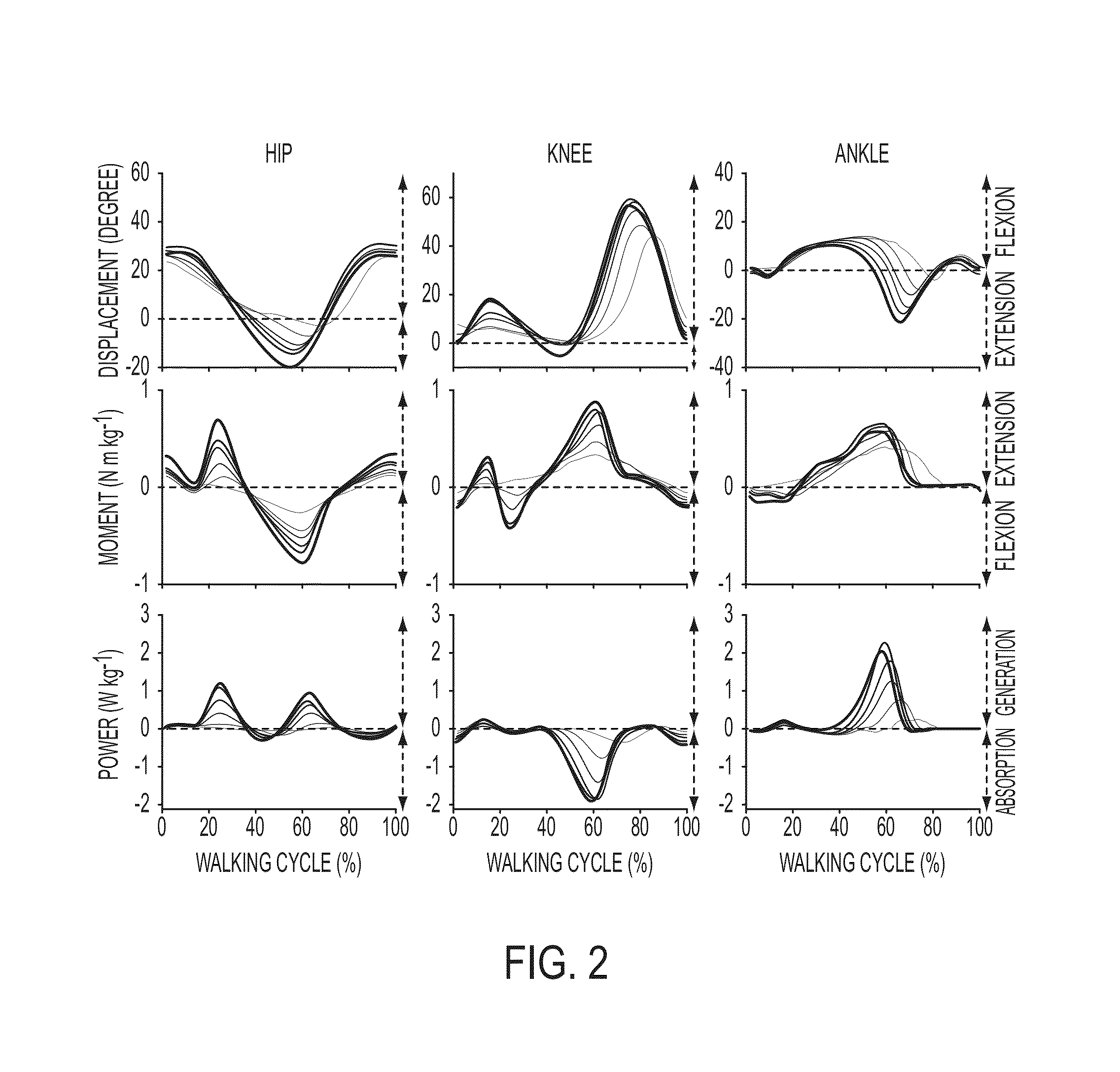Lower extremity exoskeleton for gait retraining
a lower extremity and exoskeleton technology, applied in the field of lower extremity exoskeleton, can solve the problems of complex biped gait process, abnormal synergy pattern, and easy compromise of synergy, and achieve the effect of facilitating overground locomotion
- Summary
- Abstract
- Description
- Claims
- Application Information
AI Technical Summary
Benefits of technology
Problems solved by technology
Method used
Image
Examples
Embodiment Construction
[0048]The Active Knee Rehabilitation Orthotic System (ANdROS) is a wearable and portable assistive tool for gait rehabilitation and monitoring of people with motor control deficits due to a neurological ailment, such as stroke. ANdROS reinforces a desired gait pattern by continually applying a corrective torque around the knee joint, commanded by a impedance controller. A sensorized yet unactuated brace worn on the unimpaired leg is used to synchronize the playback of the desired trajectory based on the user's intent. The device is mechanically grounded through two ankle foot orthoses (AFOs) rigidly attached to the main structure, which helps reduce the weight perceived by the user.
[0049]Lower Extremity Exoskeleton
[0050]In accordance with an embodiment of the present invention, FIG. 3 is a front view perspective drawing illustrating a lower extremity exoskeleton 300. The exoskeleton frame consists of two separate leg braces: an actuated brace 311 attached to the impaired leg, for ex...
PUM
 Login to View More
Login to View More Abstract
Description
Claims
Application Information
 Login to View More
Login to View More - R&D
- Intellectual Property
- Life Sciences
- Materials
- Tech Scout
- Unparalleled Data Quality
- Higher Quality Content
- 60% Fewer Hallucinations
Browse by: Latest US Patents, China's latest patents, Technical Efficacy Thesaurus, Application Domain, Technology Topic, Popular Technical Reports.
© 2025 PatSnap. All rights reserved.Legal|Privacy policy|Modern Slavery Act Transparency Statement|Sitemap|About US| Contact US: help@patsnap.com



